1. To Start, Separate the Muscles by Following Fat Seams
The fat seams will either be white or will have completely rendered leaving divots depending on how you cooked the steak.
Here’s a raw ribeye steak to show what I mean:
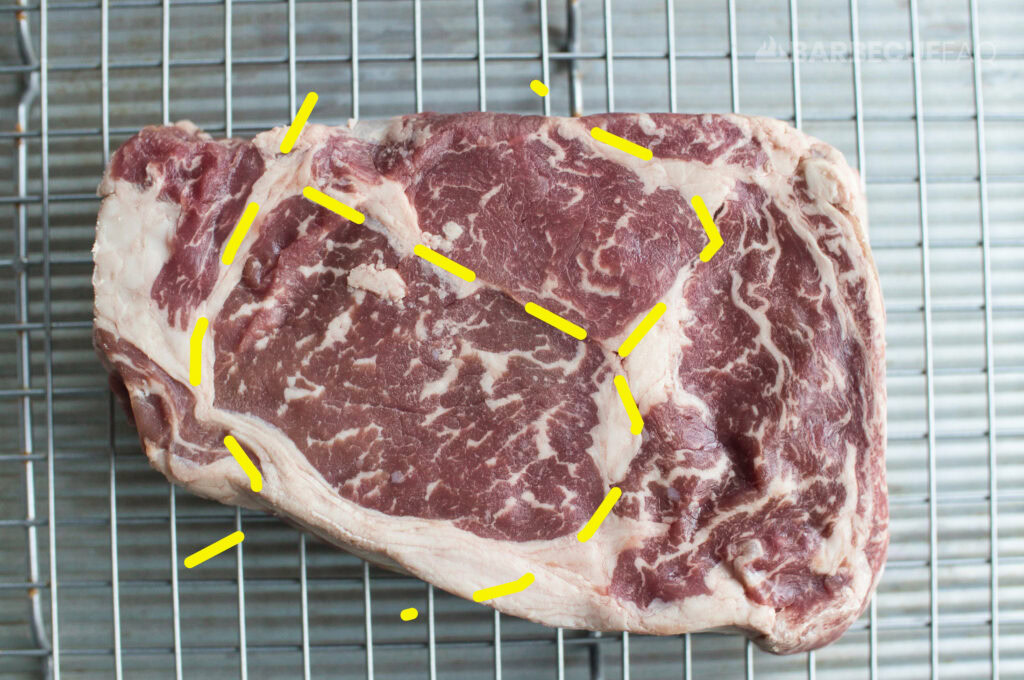
Note: Not all Ribeye steaks will have the same muscles.
If you’re a nerd like me and want a deep-dive on that – click here to jump to it.
2. Slice the Muscles Individually Against their Respective Grain
Look at the way the lines run and slice the opposite:
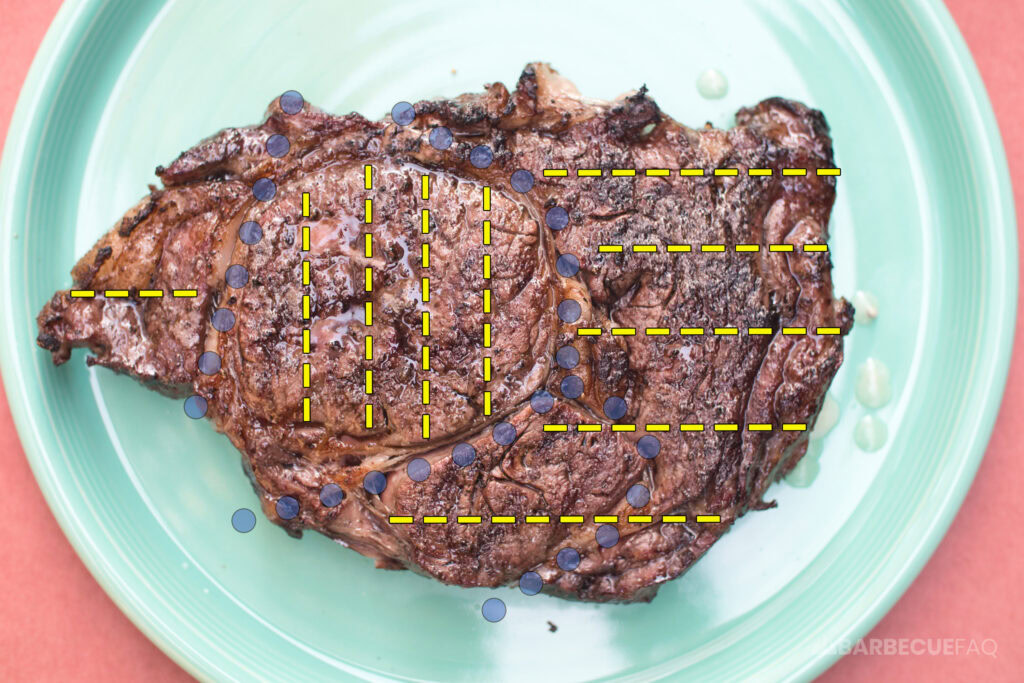
Here’s a picture of the ribeye steak sliced up:
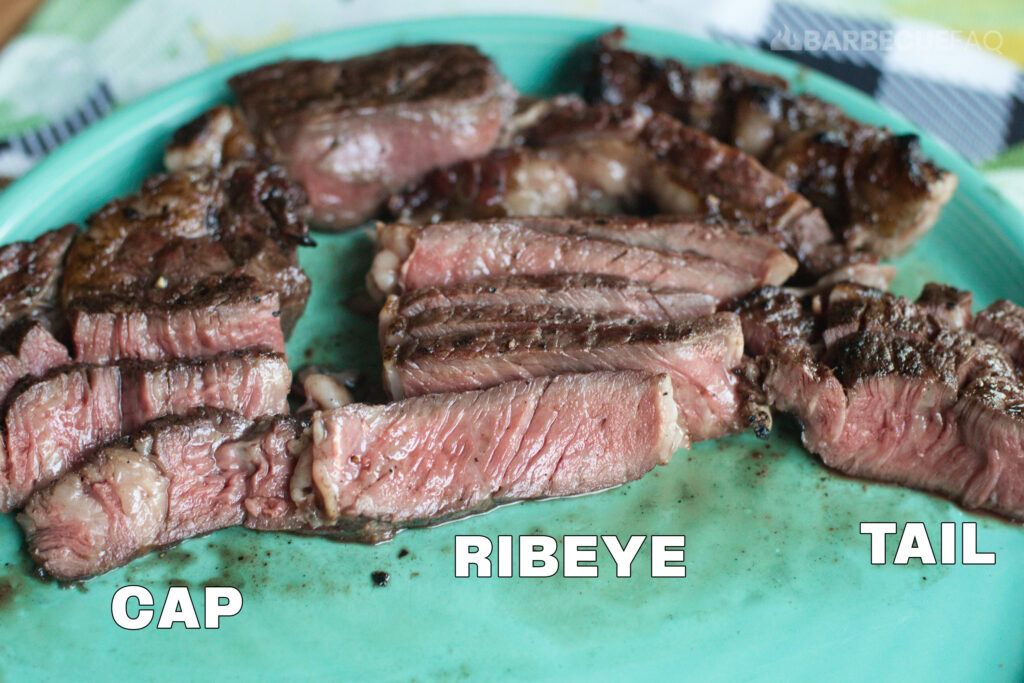
To verify, we can look at these 3 (technically 4) muscles.
Above we can see the lines are up and down, not side to side – we did a good job.
If when you’re slicing and you notice the “lines” are stacked, stop slicing and slice in the other direction.
“Anatomy” and Muscle Composition of a Ribeye Steak
There are 4 different muscles that make up a ribeye steak.
- Eye of Ribeye
- Ribeye Cap or Deckle
- Complexus
- Lip or nose
It should be noted that all of these muscles can be minimized and maximized depending on where the ribeye steak is cut from the rib primal.
1. Eye of Ribeye or Longissimus Dorsi
All ribeye steaks have an eye – it’s quite literally the center cut.
Beef Grades like Prime, Choice, and Select are based on marbling in this muscle.

2. Ribeye Cap, Deckle, or Spinalis Dorsi
All ribeye steaks have a “cap” – depending on where the steak is cut from, it will be bigger than others.
It’s considered one of the best muscles on the entire cow.
The biggest reason this muscle is so prized is because it’s heavily marbled and is supremely tender/juicy.
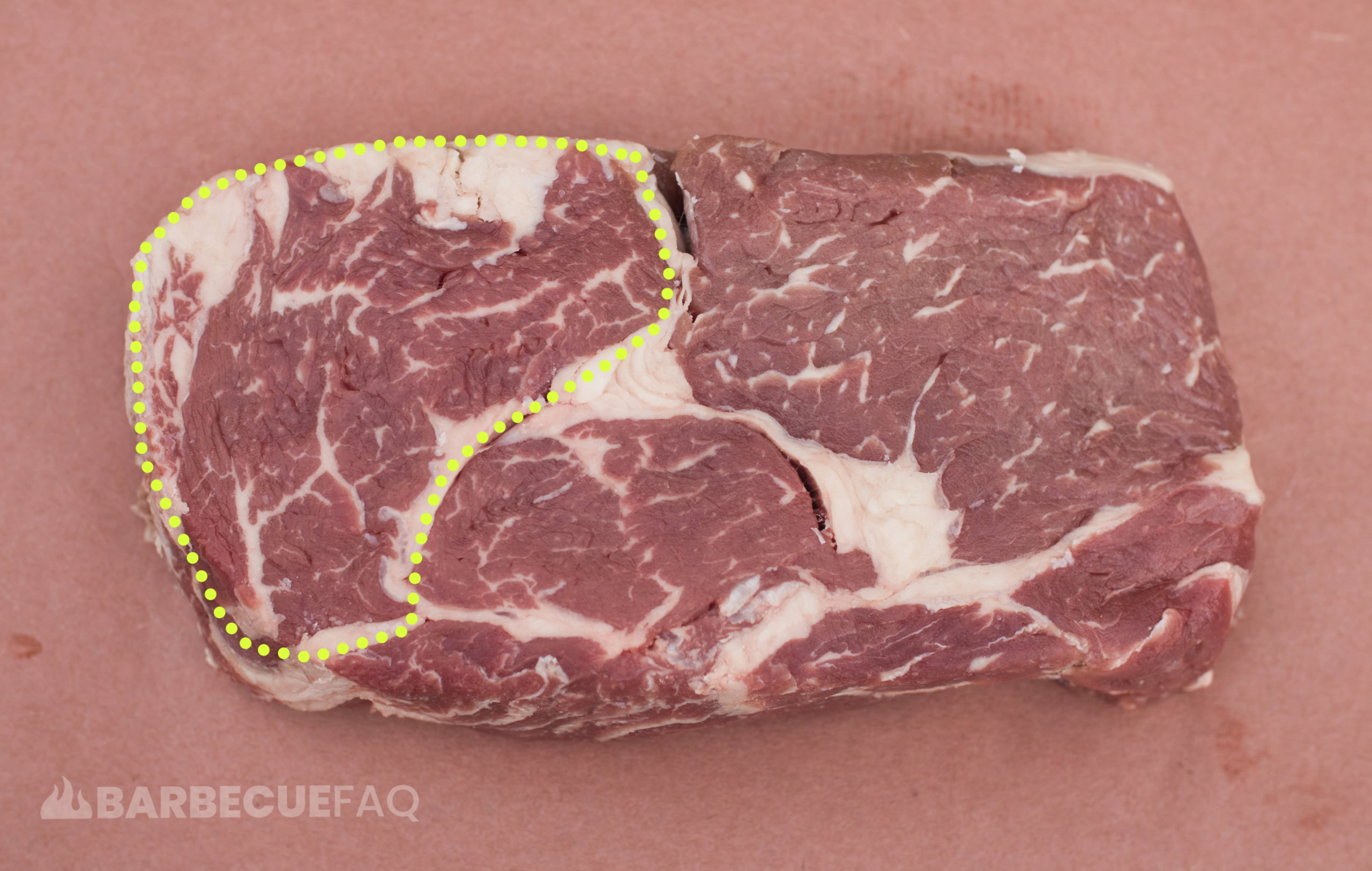
Dylan’s Tip:
If you’re someone who likes ribeye, or you have a family member who likes ribeye – pay attention to this muscle.
Since grocery stores pack steaks in overwrap, just look at the steaks and find one that has more of this muscle.
Even in steak competitions (like Steak Cookoff Association – SCA), the main muscle these folks pay attention to is the Spinalis dorsi.
3. Complexus
The complexus muscle is the smallest muscle on the ribeye and in some cases may not even be on the steak.
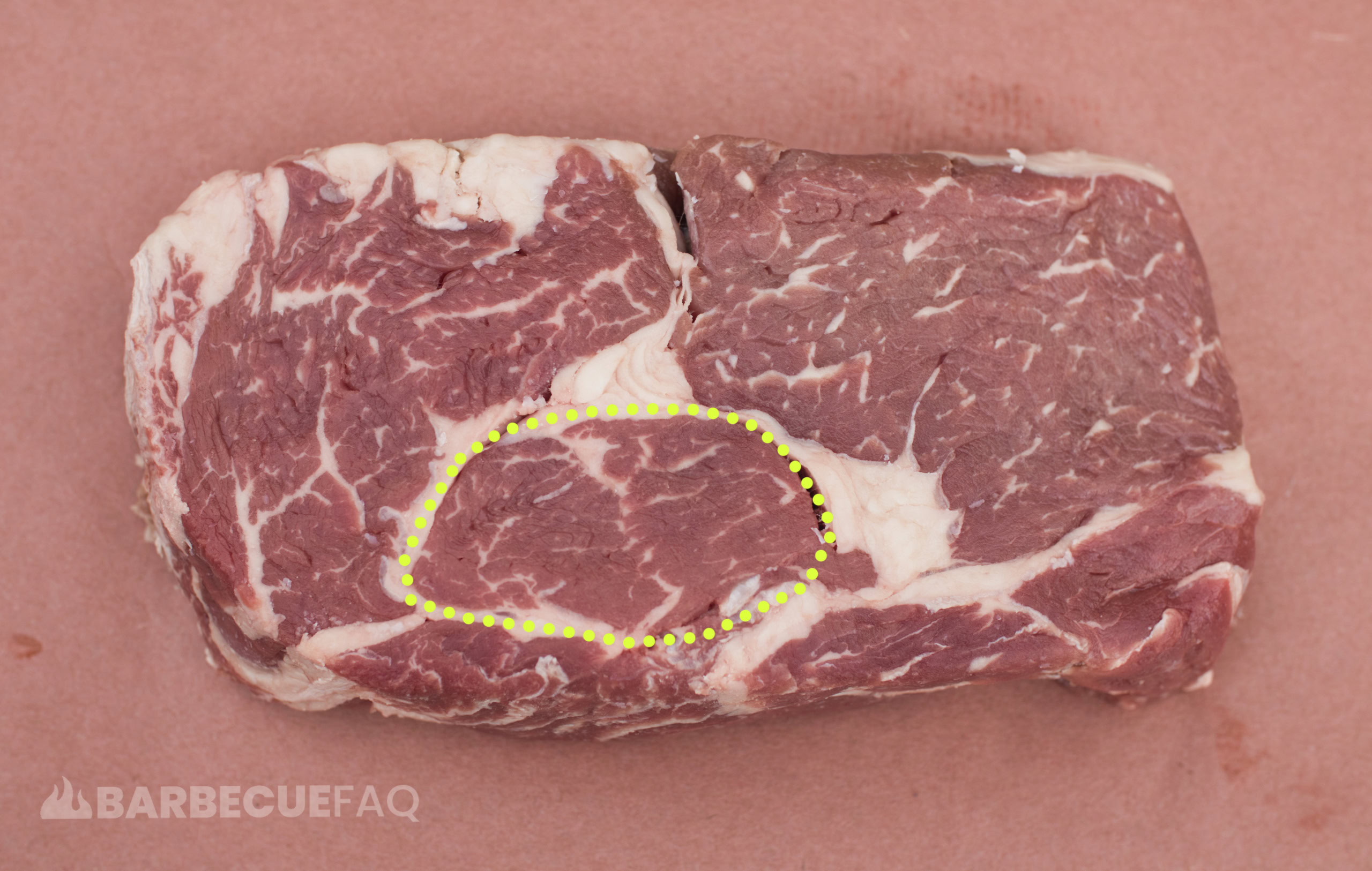
For instance, if the ribeye came from the front the steer, the complexus would be smaller than if it came from the middle – like with a chuck eye steak.
Either way, at most you’ll get 1-2 bites from this muscle.
4. Lip, Nose, or Longissimus Costarum
In a lot of cases, this muscle is removed when sold as a de-boned ribeye steak.
If the steak is bone-in, there is a good chance it’s attached to the bone.
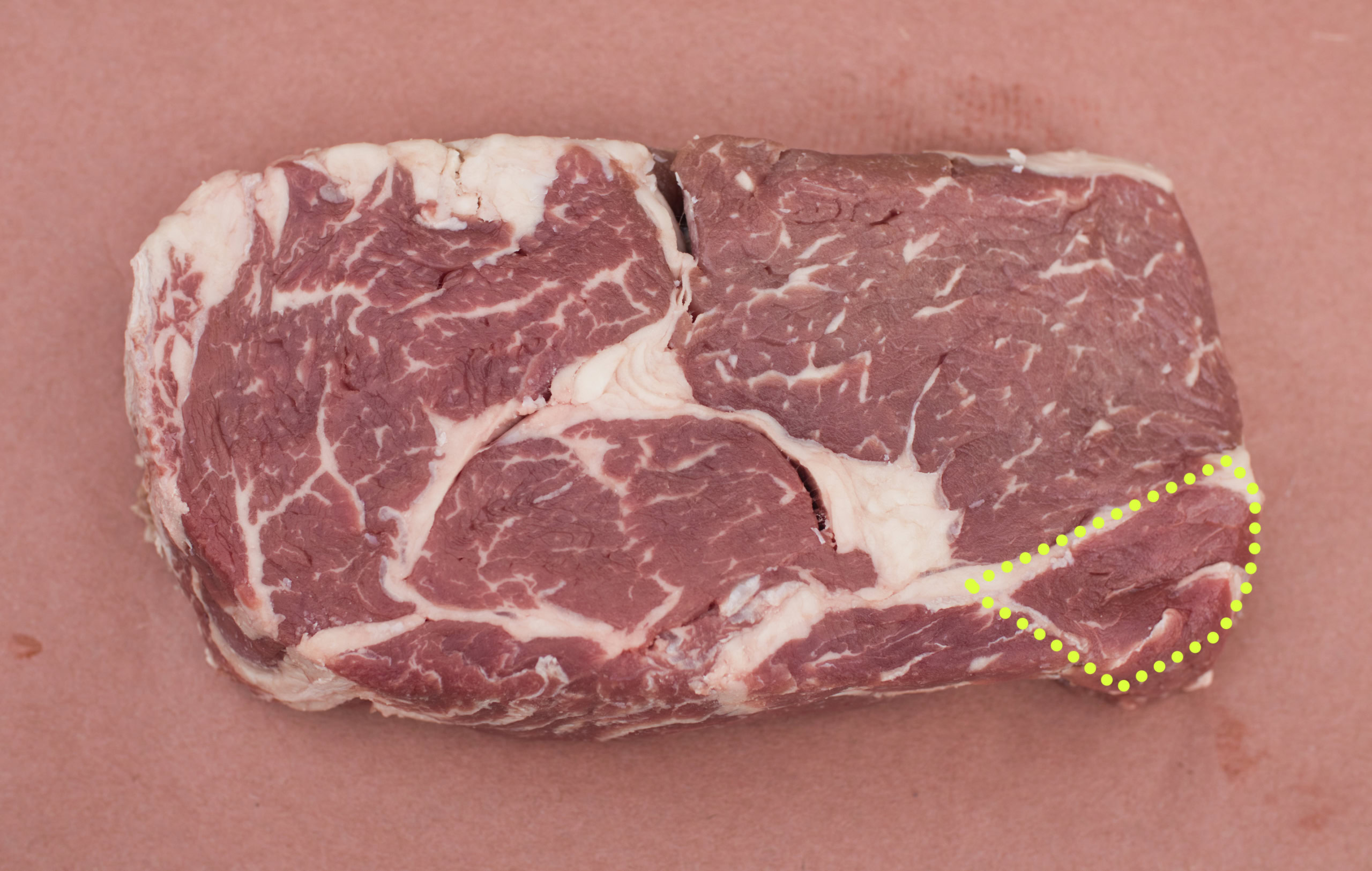
Some folks who eat ribeye actually say that this part is their favorite simply because it has an incredible beefy flavor – mainly due to fat.
But Butchers tend to strike a balance between external hard fat and lean meat as consumers don’t like paying for fat – so it’s often trimmed.


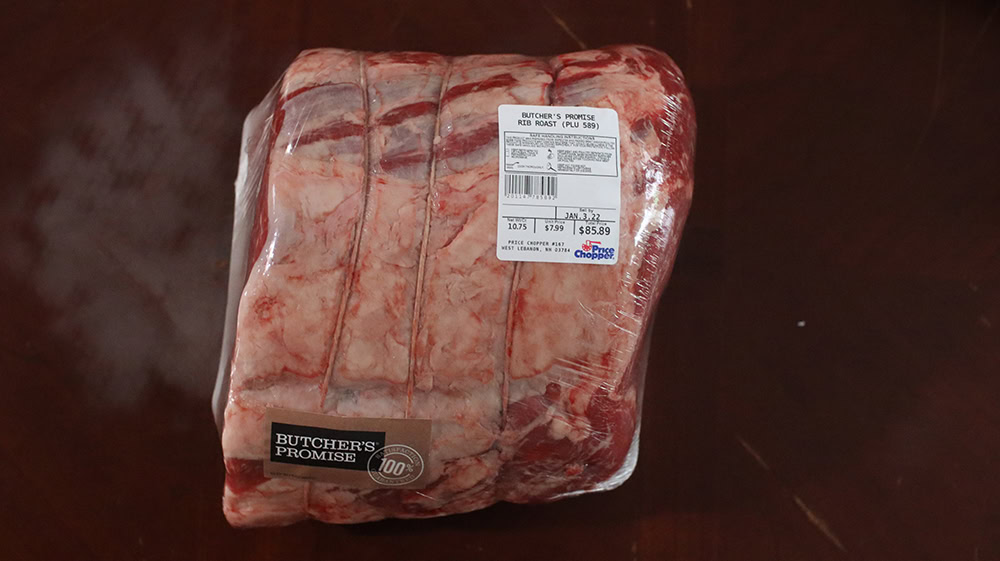
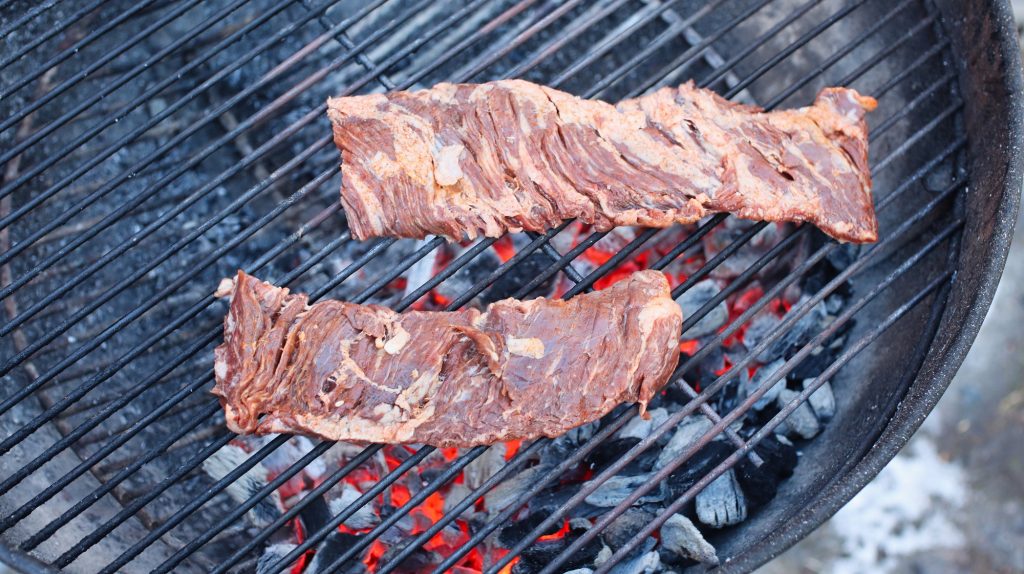
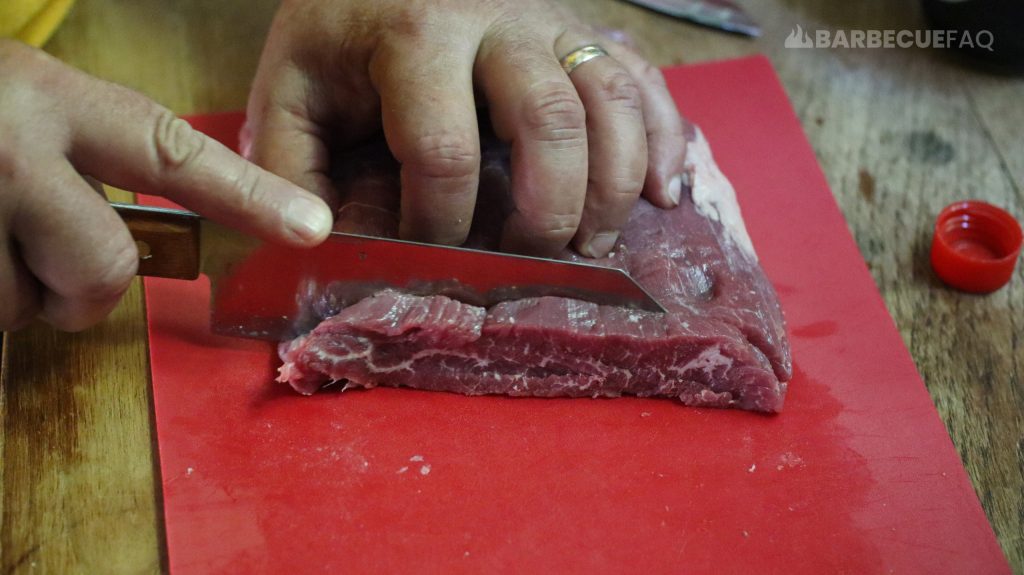
8 comments
Mark Taylor
Thank you for this! Very easy to understand and THANK for the awesome photos! That helps more than anything.
Dylan Clay
Happy to help Mark!
Enjoy your Ribeye too; I haven’t had one in months 😀
-Dylan
Troy
Excellent easy breakdown.
Dylan Clay
Happy to help Troy!
Greg Boukidjian
Great article! Very informative.
Thank you,
Greg
Dylan Clay
Happy to help Greg!
Thomas Yannitelli
Thanks-always wondered about slicing against the grain. Now I know.
Dylan Clay
Happy to help Thomas.